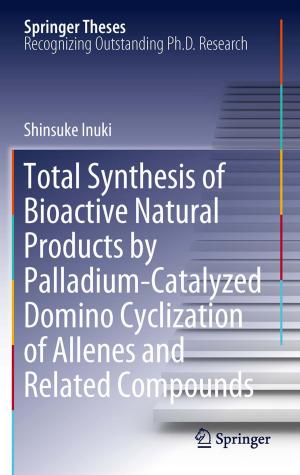Acetic Acid Bacteria
Ecology and Physiology
Nonfiction, Science & Nature, Science, Biological Sciences, Microbiology, Biotechnology| Author: | ISBN: | 9784431559337 | |
| Publisher: | Springer Japan | Publication: | June 14, 2016 |
| Imprint: | Springer | Language: | English |
| Author: | |
| ISBN: | 9784431559337 |
| Publisher: | Springer Japan |
| Publication: | June 14, 2016 |
| Imprint: | Springer |
| Language: | English |
This book provides all facets of acetic acid bacteria (AAB) and offers the future targets and directions of AAB research. It summarizes the distinctive physiological properties of AAB and the recent progress on AAB study, especially in the following five areas: 1) Molecular phylogeny and genome study of AAB; 2) Ecological features of AAB: interaction with plants, natural fermentation systems, and insects; 3) Physiological features and living strategies of AAB, including rapid oxidation ability, acid resistance, biofilm formation, and genetic instability; 4) Molecular mechanisms of several oxidative fermentations such as acetate fermentation, sorbose fermentation, and ketogluconate fermentation; 5) Recent biotechnological aspects of AAB: biocatalysts, biosensors, biocellulose, and other useful polysaccharides.
AAB research has a long history since the discovery of AAB by Louis Pasteur and the identification of AAB by Martinus Beijerinck in the nineteenth century. In the twentieth century, basic research on the taxonomic study of AAB and on biochemical study for the unique oxidative reactions of AAB had progressed as well as the industrial application of AAB not only in vinegar fermentation but also in the bioconversion process for useful chemical or pharmaceutical products. Entering the twenty-first century, AAB research has expanded more, and further progress is expected to be seen in all fields of AAB: classification and ecology, physiology and biochemistry, genetics, and biotechnology of vinegar fermentation and other oxidative fermentations. Far-reaching development in the last decade makes these bacteria more valuable for various industrial uses. Readers can obtain useful and comprehensive information which is exciting in aspects of basic science and provides hints for the better application of these bacteria to various kinds of practical production scenarios as well.
This book provides all facets of acetic acid bacteria (AAB) and offers the future targets and directions of AAB research. It summarizes the distinctive physiological properties of AAB and the recent progress on AAB study, especially in the following five areas: 1) Molecular phylogeny and genome study of AAB; 2) Ecological features of AAB: interaction with plants, natural fermentation systems, and insects; 3) Physiological features and living strategies of AAB, including rapid oxidation ability, acid resistance, biofilm formation, and genetic instability; 4) Molecular mechanisms of several oxidative fermentations such as acetate fermentation, sorbose fermentation, and ketogluconate fermentation; 5) Recent biotechnological aspects of AAB: biocatalysts, biosensors, biocellulose, and other useful polysaccharides.
AAB research has a long history since the discovery of AAB by Louis Pasteur and the identification of AAB by Martinus Beijerinck in the nineteenth century. In the twentieth century, basic research on the taxonomic study of AAB and on biochemical study for the unique oxidative reactions of AAB had progressed as well as the industrial application of AAB not only in vinegar fermentation but also in the bioconversion process for useful chemical or pharmaceutical products. Entering the twenty-first century, AAB research has expanded more, and further progress is expected to be seen in all fields of AAB: classification and ecology, physiology and biochemistry, genetics, and biotechnology of vinegar fermentation and other oxidative fermentations. Far-reaching development in the last decade makes these bacteria more valuable for various industrial uses. Readers can obtain useful and comprehensive information which is exciting in aspects of basic science and provides hints for the better application of these bacteria to various kinds of practical production scenarios as well.















